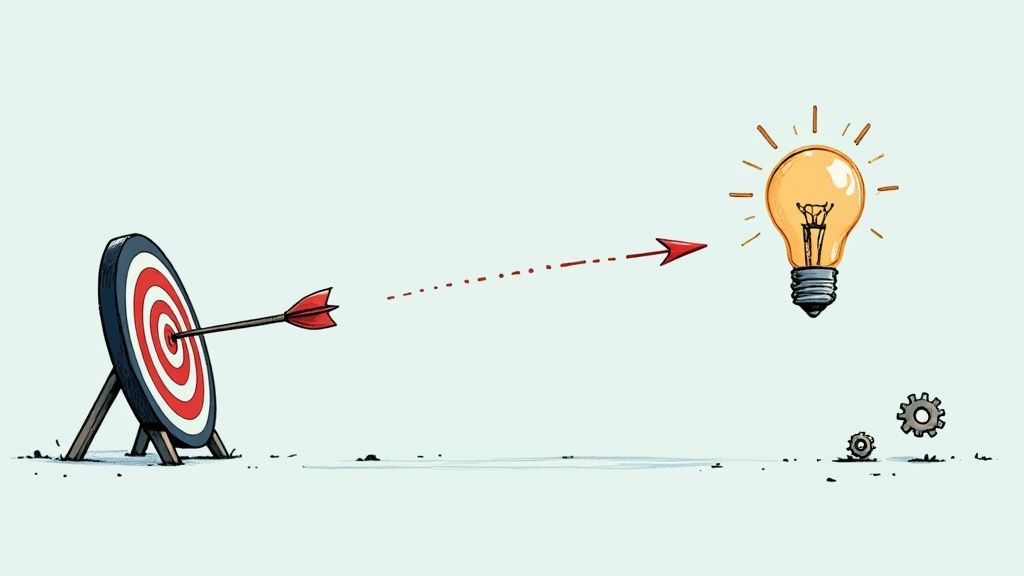Our devices—whether they’re mobile phones, tablets, or even smartwatches—are always at our fingertips. They keep us connected, informed, and entertained, but having them around us all the time has it's drawbacks. As organisations strive to thrive and create happy work environments, it’s worth considering where tech that keeps us constantly connected fits, and whether we should be regulating it in the workplace.
The Distraction Dilemma
Let’s be honest, our devices are a significant source of distraction. Notifications, social media updates, and messages constantly vie for our attention, diverting us from our primary tasks. Studies have shown that even the mere presence of a phone can diminish our ability to concentrate.
A study published in the Journal of the Association for Consumer Research found that having a phone nearby, even if it’s turned off, can significantly impair cognitive performance. Participants performed better on cognitive tasks when their phones were in another room compared to when their phones were on the desk or in their pockets.
When people are frequently interrupted by pings and buzzes, their focus becomes fragmented, leading to decreased productivity and extended time needed to complete tasks.
The constant barrage of alerts can create a state of perpetual distraction, where individuals find it challenging to engage in deep, uninterrupted work. This not only affects the quality of their output but also increases stress levels as they struggle to manage multiple demands on their attention.
The psychological impact of knowing that a phone is within reach can lead to a phenomenon known as "phone proximity effect," where individuals are less likely to engage fully with their tasks, anticipating possible interruptions. This can result in a cycle of inefficiency, where the constant need to check for updates hampers the ability to work effectively and efficiently.

Impact on Co-Workers
When someone is always on their device, it doesn’t just affect their own productivity—it can impact those around them too. Seeing a colleague constantly distracted by what's happening online, or replying to messages, rather than engaging in the real world, can create a sense of unfairness and frustration among team members who are trying to stay focused. It can also disrupt the collaborative spirit that many organisations are striving so hard to achieve, as team members might feel that their colleague isn’t fully engaged or committed to team goals.
A study published in the Journal of Applied Social Psychology found that individuals who experienced "phubbing" (being snubbed in favour of a phone) reported feeling more socially excluded. This sense of exclusion can lead to negative emotions and a diminished quality of social interactions, particularly in face-to-face settings.
On a personal level, excessive device use can make others feel unimportant or overlooked. For example, when someone is glued to their phone, it often appears that they are disinterested in their colleagues or what they have to say. This behaviour can create an uncomfortable and isolating atmosphere. We've all experienced—or witnessed—situations where somebody prioritises their phone over face-to-face conversations. Whether it’s in a coffee shop, where one person is engrossed in their screen instead of engaging with the person sitting across from them, or in a social setting where scrolling takes precedence over meaningful interaction, the result is the same: a sense of disconnection.This lack of engagement can lead to a cycle where people feel compelled to reach for their own phones, perpetuating an environment of disengagement. As a result, individuals may hesitate to interrupt or connect with someone who is absorbed in their screen, further deepening the divide in personal interactions.

Mental Health Considerations
The pressure to stay connected and informed can be overwhelming, leading to stress and anxiety among employees. With social media at our fingertips, it’s all too easy to fall into the trap of comparing ourselves to others, often viewing their careers through a polished lens. This is known to create a sense of inadequacy, as we scroll through artificially curated highlight reels of colleagues and peers who seem to be achieving more, doing better, and living more fulfilling lives.
The need to keep up with this constant stream of information is exhausting. Many feel compelled to respond immediately to messages and notifications, fearing they might miss out on important updates or opportunities. This relentless connectivity can lead to burnout, making it difficult to find balance and satisfaction in our work.
"I thought once everybody could speak freely and exchange information and ideas, the world is automatically going to be a better place. I was wrong about that." - Evan Williams, Co-founder of Twitter and Medium
Research has shown that this habit of comparison can negatively impact self-esteem and mental well-being. Studies indicate that heavy social media use is linked to increased feelings of loneliness and depression, as individuals grapple with the unrealistic standards set by others. The pressure to maintain a certain image online, combined with the fear of falling behind, can create a toxic cycle that detracts from genuine engagement and connection in the workplace.
Blurring the Boundaries
Using personal messaging apps for work communication creates significant challenges that blur the lines between professional and personal life. When employers expect employees to use their personal devices for work-related messages, it raises several important concerns.
One key issue is the ambiguity surrounding which messages require a response. When work communications come through the same channels as personal messages, employees may feel obligated to check and respond to everything, even during off-hours. This creates a dilemma: should they reply to a light-hearted message from a colleague while ignoring a work-related query? The lack of clear boundaries can lead to stress and uncertainty about what is appropriate, contributing to an overwhelming sense of obligation.
Research published in Internet Research found that using personal devices for work purposes can lead to work-life conflict. The stresses associated with using technology for work often spill over into non-work life domains, exacerbating stress and reducing overall well-being
This constant connectivity can result in employees feeling like they can never truly disconnect from work. The expectation of immediate responsiveness, even outside of working hours, can lead to burnout and decreased job satisfaction. It becomes particularly problematic when employers send non-urgent messages to personal devices during evenings, weekends, or holidays, as this creates an implicit expectation of availability that can further erode work-life balance.
There are ethical considerations regarding privacy and choice, too. Employees should have the right to decide whether they want to use their personal devices and accounts for work purposes. Mandating the use of specific messaging apps can feel coercive and may not be well-received by all staff members.

Professionalism and Client Perception
Frequent device use around clients and potential business partners can significantly shape how they perceive a company’s professionalism. In today’s world, first impressions matter more than ever, and the way employees interact with their devices can speak volumes about a company's culture and commitment.
Imagine a client walking into a meeting and seeing team members engrossed in their phones. This scene can create an immediate impression of distraction and disengagement, suggesting that the employees are not fully invested in the discussion at hand. Clients expect their partners to be attentive and focused, and when they witness frequent device checking, it can raise doubts about the company’s dedication to their needs. Such distractions can lead to feelings of disrespect, making clients question whether their projects are truly a priority.
70% of employees admit to regularly checking their smartphones during meetings. This behaviour can be a significant source of distraction and is often perceived as unprofessional by colleagues and clients.
The stakes are even higher during client meetings or presentations. If employees are seen responding to messages or scrolling through social media while a client is speaking, it sends a clear message: the client’s time and input are not valued. This can erode trust and confidence, potentially jeopardising long-term relationships. Clients want to feel assured that they are working with a team that is fully engaged and committed to their success, and distractions can quickly undermine that confidence. In a competitive market, where every interaction counts, a distracted workforce can leave a lasting negative impression that may deter valuable business opportunities.

Creating a Healthier Balance
We've explored the challenges that come with phones being ever-present in the workplace. But let's be clear: technology isn't the villain—far from it! When used thoughtfully, tech can be a powerful ally in creating a healthier and more productive work environment. The key lies in harnessing its potential while avoiding its pitfalls.
So, how can we foster a workplace that embraces technology in a way that promotes both happiness and health? It's about striking that delicate balance between staying connected and maintaining boundaries. It's about using digital tools to enhance our work, not overwhelm it.
Let's explore some practical strategies that can help your organisation leverage technology to its fullest, all while ensuring that it contributes to—rather than detracts from—a positive work culture.
Implement Work-Focused Collaborative Platforms
Introduce tools like Slack or Microsoft Teams as the primary means of work communication. These platforms can significantly reduce the need for employees to use personal messaging apps for work purposes, helping to maintain a clearer boundary between professional and personal life. It's also a good idea to consider recommending that people don't have these platforms on their personal devices. By centralising work-related communications, employees can more easily 'switch off' when they're not at work.
Utilise Customer Relationship Management (CRM) Systems
Implement a robust CRM system to keep all team members updated on client interactions and project statuses. This reduces the need for after-hours inquiries and helps maintain a more structured work-life balance. With all relevant information accessible during work hours, there's less pressure to respond to work-related queries outside of normal working times.
Create Clear Communication Policies
Establishing guidelines for when and how to use work-specific platforms can be very effective. Encourage employees to limit work communications to your chosen platforms and during agreed-upon hours, reinforcing the separation between work and personal time.
Encourage the Use of Focus Modes
Promote the use of focus modes on devices, which can help prevent personal notifications from interrupting work time and vice versa. This practice can enhance concentration and contribute to a healthier work-life balance.
Educate on Distractions
Help employees understand the nature of distractions and how they can impact productivity. Offering resources or workshops on this topic can raise awareness and encourage better personal management of distractions.
Regulate Personal Device Use
Consider implementing policies that allow personal devices only during break times, rather than at desks. This can foster a more engaged environment where employees interact with one another and their surroundings, enhancing collaboration and team spirit.
Provide Training on Digital Tools
Offering comprehensive training on collaborative platforms and CRM systems ensures that all employees can effectively utilise these tools. This reduces frustration and increases efficiency across the board.
Foster a Culture of Asynchronous Communication
Encourage the use of features like status updates and scheduled messages within your chosen platform. This allows employees to share important information without the expectation of immediate responses outside of work hours.
These approaches aim to make technology work for us, not the other way around, creating an environment where employees can thrive both professionally and personally. And if you'd like some advice on the best ways to integrate tech into your organisation, or some advice on the best policies and procedures, we're always here to help! Get in touch today, or book a meeting below.








